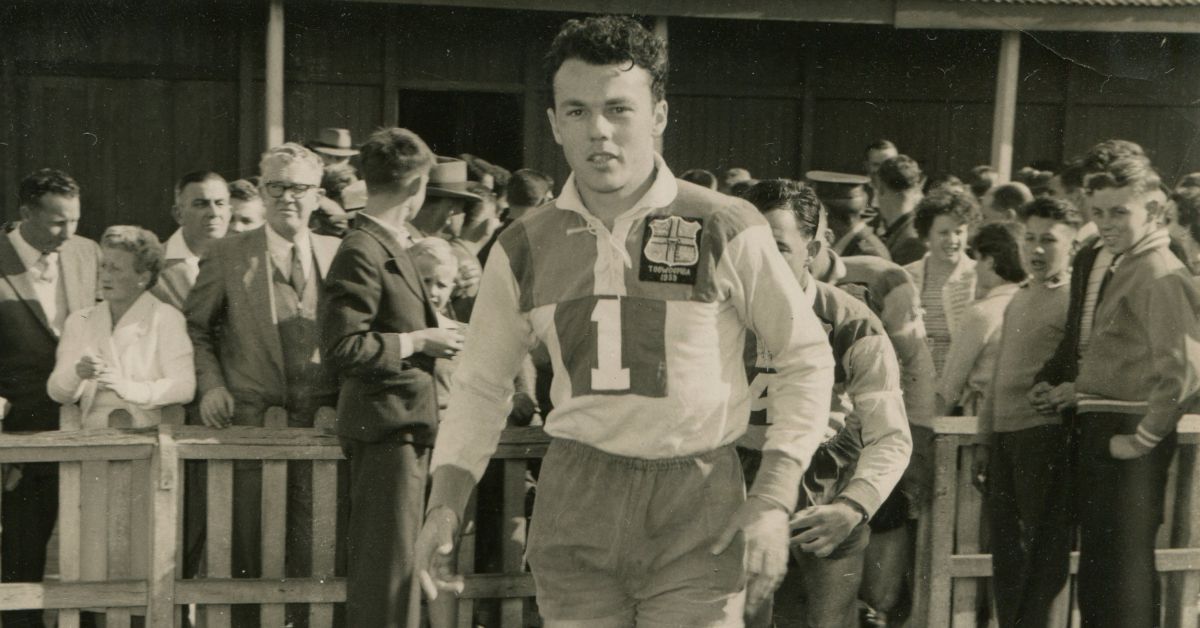Billy Slater is currently firmly ensconced in the position of Australia’s premier fullback, currently holding the record for the most tries scored by a fullback in the NRL. He epitomises the concept of the “running fullback” and no one currently questions the validity or the value of having a fullback that scores a lot of tries for a team. However, if you go back in history fifty years, the situation was completely different. People viewed a fullback as more of a defensive player, whose main contribution to team scoring was to kick goals. The player that was primarily responsible for breaking down this stereo-type was Frank Drake. He was a rebel, but, unlike James Dean, he was a rebel with a cause.
Historical background
Before the 1960s, fullbacks were just not expected to score tries, and no Australian fullback had ever scored a try in an Australian vs Great Britain test match. That all changed on 14th July, 1962, when Frank Drake went into the record books for scoring a try in the 3rd Test of the series against Great Britain in Sydney. This iconic moment in Rugby League history helped to vindicate the vision that Frank had about the way that he felt his position should be played. The irony is that Frank, the player that rebelled against the status quo by pioneering the idea of a “running fullback”, and that had once scored four tries in a Bulimba Cup game, should never really have been playing in the Test in the first place.
A Week Before the Test
In the week leading up to the test, Frank had an extremely bad bout of bronchial asthma, something that he had suffered from since he was a boy. He had been in bed about three days when he heard that he had been selected. As these attacks usually lasted about 10 days, his immediate thought was that he would have to pull out of the game, but thought he may as well get medical advice about the prospect of playing. After being checked over by his GP, the doctor said that he could give Frank a needle and guaranteed that it would get him through the week and onto the field for the game. It was then that Frank decided to take a gamble, just like he loved to do on the horses. But he didn’t see the situation as too big of a risk – after all, Australia had already lost the Ashes – and Frank felt he had a point to prove to all the people that had doubted or criticised him.
On the Day
As he ran onto the Sydney Cricket Ground, he didn’t feel at all apprehensive, even though this was only the second time he had represented Australia in a Test. He knew he was far from being in peak condition, but was determined to have the mental toughness to overcome any negative repercussions that the illness might have. He saw the huge crowd all around him, but blocked out the noise and the atmosphere – his only concern was the game. He didn’t have a special “game-plan”. He was going to do what he always did – spontaneously interject himself into the play at opportune moments.
The Try
Apart from playing sick, there was another ironic aspect to this particular Test match – the way in which Frank scored the try. He usually relied on one or more of his three key athletic attributes to score: side-step, swerve, or change of pace. For this particular try, he scored off a cross-kick.
At about the twenty minute mark of the game, he was on the cricket pitch area in the centre of the ground. The ball went out along the Australian backline. When Eddie Lumsden received the ball, he found he was cornered, and was almost over the sideline, on about the 25. He then cross-kicked the ball to the opposite side of the field. This was something that Eddie did fairly often, and Frank, anticipating this, positioned himself where he thought the ball would be kicked to. The ball bounced, and two Englishmen went for the ball, but they did so too early and the ball ballooned over their heads. Frank had hung back, and this paid off as he caught the ball about 10 metres from the try line and waltzed in for one of the easiest tries he had ever scored in his life.
After the Game
No one noticed the milestone try at first. The try only really became famous about twenty years later when Australian fullbacks started scoring tries in Tests on a regular basis and historians started wondering who was the first fullback to do so. The try is certainly an iconic one, and deserves a place in history for that reason alone; but it may be more appropriate to call it a symbolic one. It symbolised the effectiveness of using a fullback as a try-scoring threat. There is no doubt that, over time, history has validated this concept – just ask Billy Slater.
